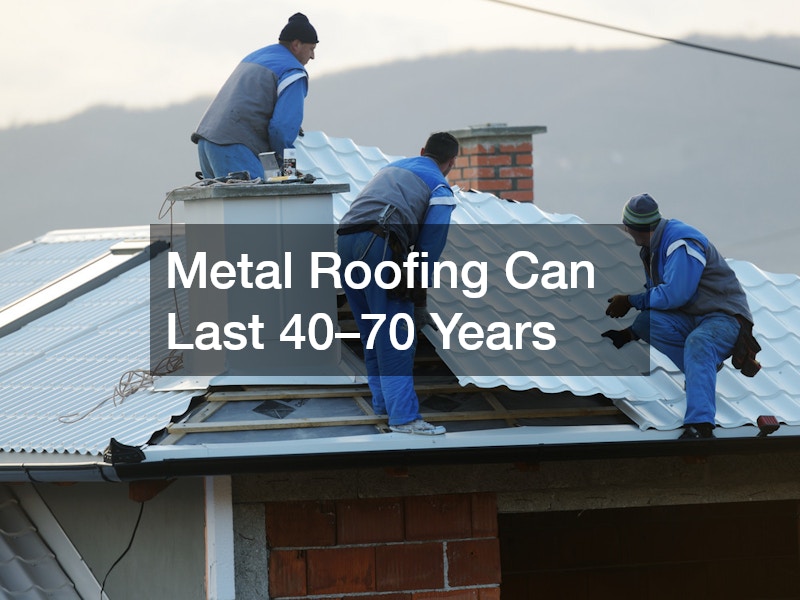Disclaimer: Benro Properties. This site provides home improvement content for informational purposes only.
Your roof is your home’s first line of defense against rain, snow, sun, and wind. Over time, even the most durable roofing materials wear down, and small issues can turn into costly repairs if ignored. Deciding whether you need a new roof isn’t always straightforward—sometimes repairs are enough, while in other cases, full replacement is the better choice. Understanding the signs, lifespan expectations, and professional recommendations from roofing contractors can help you make an informed decision.
Consider the Age of Your Roof
One of the most important factors in determining whether you need a new roof is its age.
Asphalt shingles generally last 15–30 years.
Metal roofing can last 40–70 years.
Clay and concrete tiles may last 50 years or more.
Slate roofing can last over a century with proper maintenance.
If your roof is approaching or has surpassed its expected lifespan, replacement might be more cost-effective than frequent repairs.
Look for Visible Signs of Wear and Damage
A visual inspection can reveal a lot about your roof’s condition. Here are some signs to watch for:
Curling, cracked, or missing shingles – This can expose the underlayment and allow water infiltration.
Moss, mold, or algae growth – While sometimes a cosmetic issue, it can also signal trapped moisture.
Sagging rooflines – This could indicate structural problems that require immediate attention.
Granule loss – If you notice granules from asphalt shingles in your gutters, the shingles may be deteriorating.
If the damage is confined to a small area, repairs may be enough. Widespread deterioration, however, often points to the need for a full replacement.
Check for Leaks and Water Damage
Leaks are one of the clearest indicators of roof trouble. They can occur around chimneys, vents, skylights, and in valleys where water runoff is heavy. Water stains on ceilings or walls, peeling paint, or damp insulation in the attic are all red flags.
If leaks are due to isolated flashing problems, targeted repairs can help. But if water is penetrating in multiple areas, it may be a sign that the entire roofing system is compromised.
Factor in Energy Efficiency
An older or damaged roof can make it harder to regulate indoor temperatures, leading to higher heating and cooling bills. Poor ventilation and worn materials can trap heat in summer and allow warm air to escape in winter. Replacing your roof with modern, energy-efficient materials can improve insulation, reduce utility costs, and make your home more comfortable year-round.
Assess Storm Damage
Severe weather can cause sudden and significant roof damage. After heavy storms with high winds, hail, or snow, inspect your roof for issues like torn shingles, punctures, or dented flashing. Even if the damage seems minor, hidden problems can worsen over time.
Insurance policies may cover storm-related roof replacement, so documenting the damage promptly and contacting both your roofer and insurance company is important.
Consider the Cost of Repairs vs. Replacement
Sometimes repeated repairs add up to more than the cost of a new roof. If you find yourself calling a roofer multiple times a year, it might be worth investing in a full replacement. A new roof also comes with the benefit of a fresh warranty, giving you peace of mind for years to come.
Evaluate Roof Ventilation and Underlayment Condition
The performance of your roof depends on more than just the surface materials. Proper ventilation helps prevent moisture buildup and extends the life of the roof. Likewise, the underlayment—installed beneath the shingles—protects against leaks. If these components are failing, it can be a strong reason to consider a replacement rather than patchwork fixes.
Professional Inspection and Recommendations
While homeowners can spot obvious signs of trouble, a professional roofing inspection can uncover hidden issues. Roofers use specialized tools and techniques to assess shingle condition, flashing integrity, ventilation, and structural soundness. They can then provide an honest assessment of whether repairs will suffice or if replacement is the smarter option.
Knowing when you need a new roof is about balancing age, visible wear, water intrusion, and overall performance. In some cases, timely repairs can extend your roof’s life; in others, replacement offers better value, improved protection, and increased home efficiency.

